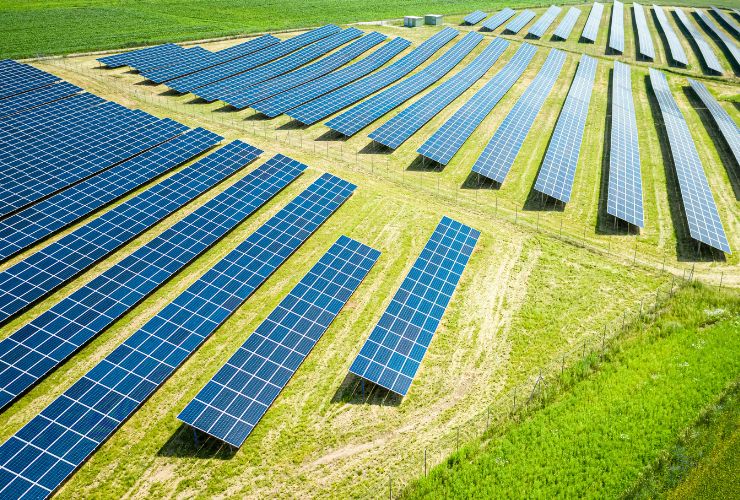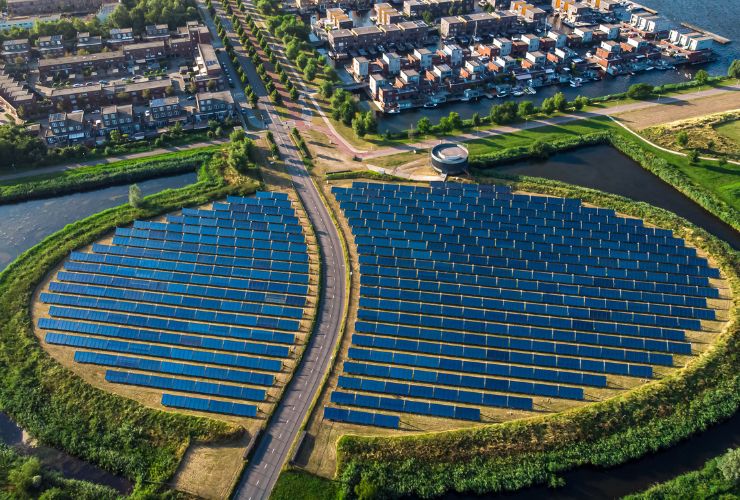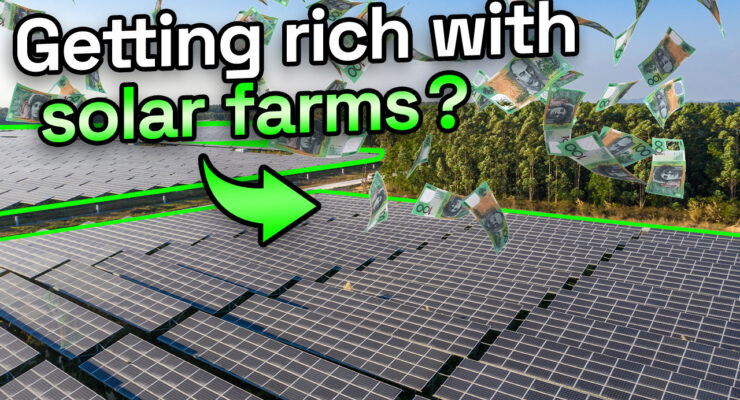Fast read
Solar farms are large-scale solar projects that harvest solar energy using various solar energy collection techniques, most solar panels. Ground-mounted solar systems are different from rooftop and commercial systems. They are decentralised and have solar panels on flat ground instead of on buildings.
Utility and community solar farms are the two varieties. Community solar farms are smaller and provide power to people who pay to be part of the system. Utility solar farms are bigger and serve clients like energy companies.
Solar farms work similarly to a solar system, with many individual solar panels grouped together to produce electricity. If built on trackers, the panels rotate to follow the sun throughout the day. The benefits of solar farms include environmental sustainability, financial return, and energy independence.
Everything you need to know about solar farms
Many are starting to realise the numerous benefits of solar farms. They are increasing in popularity in Australia and worldwide as they significantly contribute to reducing C02.
What are solar farms?
Solar farms are large solar system installations that consist of multiple panels in one location. Solar farms are essentially a larger-scale version of a home solar system.
Unlike residential and commercial solar energy systems, solar farms are typically situated in rural locations. They consist of ground-mounted solar arrays installed across large fields of flat or undulating ground.
Instead of providing energy directly into a home or business, solar farms can generate power and provide it to the electricity grid. Primarily two types exist: utility and community solar.
The most significant difference between these two types of systems is the size. Utility solar farms tend to be much larger and start at 5 Mega Watts and range as large as 3000 Mega Watts (MW). In contrast, community solar farms tend to range from 500kW to 10MW.
The other significant difference between these two farms is regarding whom they provide power to. Community solar farms usually provide power to subscribers who have paid to participate in the solar panel system. In contrast, utility farms are typically owned by an energy company and provide electricity to customers.

So how do they work?
Solar farms work similarly to residential or commercial solar systems on a significantly larger scale.
The solar panels create electricity via the sunlight hitting the solar panels. Sunlight makes electricity in solar cells. The electricity goes to a central inverter to change into power for the grid.
The AC power then moves to the grid through high-voltage transformers. Although north-facing panels are standard, panels can also face different directions to generate more energy at various times of the day.
It’s common for panels to be designed facing east and west at a low tilt. This setup allows more panels to be installed in an area, reducing shading potential.
Solar panels generate more electricity during peak demand times in the morning and evening, making them more valuable on the market. This is because more people are using electricity during these times. The increased power production during peak demand periods boosts the overall value of solar panels in the electricity market.
Certain solar farms utilise tracking, where panels are mounted on movable mounts known as trackers. These trackers enable the panels to follow the sun from morning to afternoon, maximising power generation throughout the day.
They will be an integral part of our future energy production. Solar farms for homes and businesses will be important in the future. They will help us use less fossil fuels and be more self-sufficient in our energy sources.
Large-scale solar has experienced price decreases over the years as panel prices came down. The need to get to Net Zero by 2050 means we can expect many more solar and wind farms around our country.
What are the benefits?
Environmental sustainability
Solar energy is a clean and renewable way to make electricity. It can help us use less fossil fuels and lower greenhouse gases. Investing in solar farms can support the transition to a more sustainable energy system and help combat climate change.
Financial return
Investing in solar farms can provide an excellent financial return. Moreover, as the demand for renewable energy sources increases, the value is also likely to increase.
In addition, sometimes governments offer financial incentives and tax breaks for investing in renewable energy. This can help reduce the initial investment cost of solar electricity and increase the potential return on investment.
Many ways exist to invest in or build solar farms and achieve strong financial returns. Some of these briefly include:
- Companies can buy energy directly through agreements like power purchase agreements or lease agreements, instead of from a retailer. This is often done with companies like mining companies.
- Supplying the electricity to an energy retailer directly or another market participant for their customers’ supply.
- Offering electricity on the electricity market. Based on the size of the solar system, there are different ways that this can be organised.
- For solar farms under 5MW, all electricity is paid at market rate. The rules for connecting and applying are simpler compared to larger systems.
Connecting to the grid can be a challenge.
Sometimes they require significant local grid infrastructure upgrades, which can add to the costs.
Solar farms are becoming more popular, with different ways to develop, contract, and sell electricity.
Community solar farms let people buy a share for a return on investment or cheaper electricity. Residents and investors can own part of the solar farm.

Energy independence
By investing in these systems, communities and countries can become more self-sufficient in energy production. This can help reduce reliance on imported energy sources, which can be subject to price fluctuations and supply disruptions. Producing energy locally can boost the local economy by creating jobs and supporting businesses in making, installing solar panels, and maintaining them.



